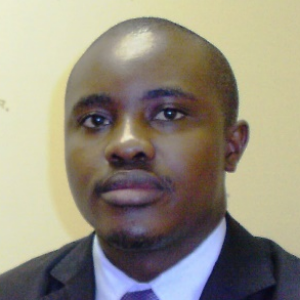Title : Spatio-temporal analysis of soil erosion in fragile erosion-prone landscapes in Kenya using the Revised Universal Soil Loss Equation (RUSLE)
Abstract:
Every season, tons of fertile, agriculturally productive topsoil, are lost globally due to soil erosion. Topsoil is the lifeline to crops, as it is rich in humus and available nutrients besides providing anchorage. Soil erosion is particularly pronounced on steep areas with little vegetation cover and compromised flood control systems. In Kenya for instance, disastrous soil erosion losses of close to 279 t/ha have been recorded in arid and semi-arid lands (ASALS), which are above the recommended maximum allowable annual loss rate of 4 t/ha. Such phenomenon has accelerated the food insecurity risk of these fragile agroecosystems. Modelling future climate risks and building scenarios provides an opportunity for identifying future risks and consequently building community climate adaptation. This study aimed at building climate resilience for fragile agricultural systems through prediction of future soils erosion indices for erosion-prone landscapes using the RUSLE model for a typical arid and semi-arid case study area of Machakos county in Kenya. The The RUSLE model considers the key variables that affect soils erosion including in priority order, rainfall erosivity (R), soil erodibility (K), slope length and steepness (LS), cover management (C), and support practices (P). The datasets used included applicable GIS base maps, digital elevation model maps (DEM) for deriving LS factor, 250 m resolution Soil grids datasets and 30x30 arc. Harmonised World Soil Datasets (HWSD), Copernicus Sentinel-2 10 m land use and land cover maps, as well as downscaled climate data using ensemble models. Baseline simulated rainfall data was obtained from six global climate models and these included ERA5, GPCC CRU, IMERGE, CHIRPS. On the other hand, rainfall projections data were obtained from eleven models OBS, CCCma, CNRM, CSIRO, ICHEC, IPSL, MIROC, MOHC, MPI, NCC, and NOAA. Two scenarios; RCP4.5 and RCP8.5 were employed in the current study to represent high emission and medium stabilization scenarios respectively. The results showed baseline soil erosion ranged from 7.20 t ha−1 yr−1 - 10.98 t ha−1 yr−1, while the projected soil erosion showed a slight decline from the baseline, with values ranging from 10.6 t ha−1 yr−1 – 10. 77 t ha−1 yr−1 under RCP 8.5 in 2050 to 6.66 t ha−1 yr−1 - 9.99 t ha−1 yr−1 under RCP 8.5 in 2100. Again, soil grids data sets performed better having obtained a higher correlation (r=0.65) with the national erosion index of 5.5 t ha−1 yr−1 as opposed to the HWSD soil database (r=0.543). Improved soil management practices are believed to account for positive outlook of the future soil erosion statistics observed for Machakos including the much-promoted government-led soil and water conservation practices such as terracing, mixed cropping, minimum tillage and mulching among others. The paper recommends the continued use and sensitization on better soil and water management practices in Machakos and the wider ASAL agricultural landscapes in Kenya and the world.
Audience Take Away Notes:
- The study presents unique approaches in the modelling of future soil erosion based on anticipated rainfall, land use and management practices for the future
- The study compares the results of different soil databases i.e Soil grids and harmonised world soil datasets for comparison on best soil erosion prediction
- The study becomes the first study of its kind to use the high-resolution sentinel 10m Land use cover maps in Kenya for soil erosion prediction
- The study present different scenarios for 2050 and 2100 based on RCP 8.5 and RCP 4.5
- The study presents an innovation in the application of the RUSLE methodology for soil erosion studies in fragile flood-prone agroecosystems



